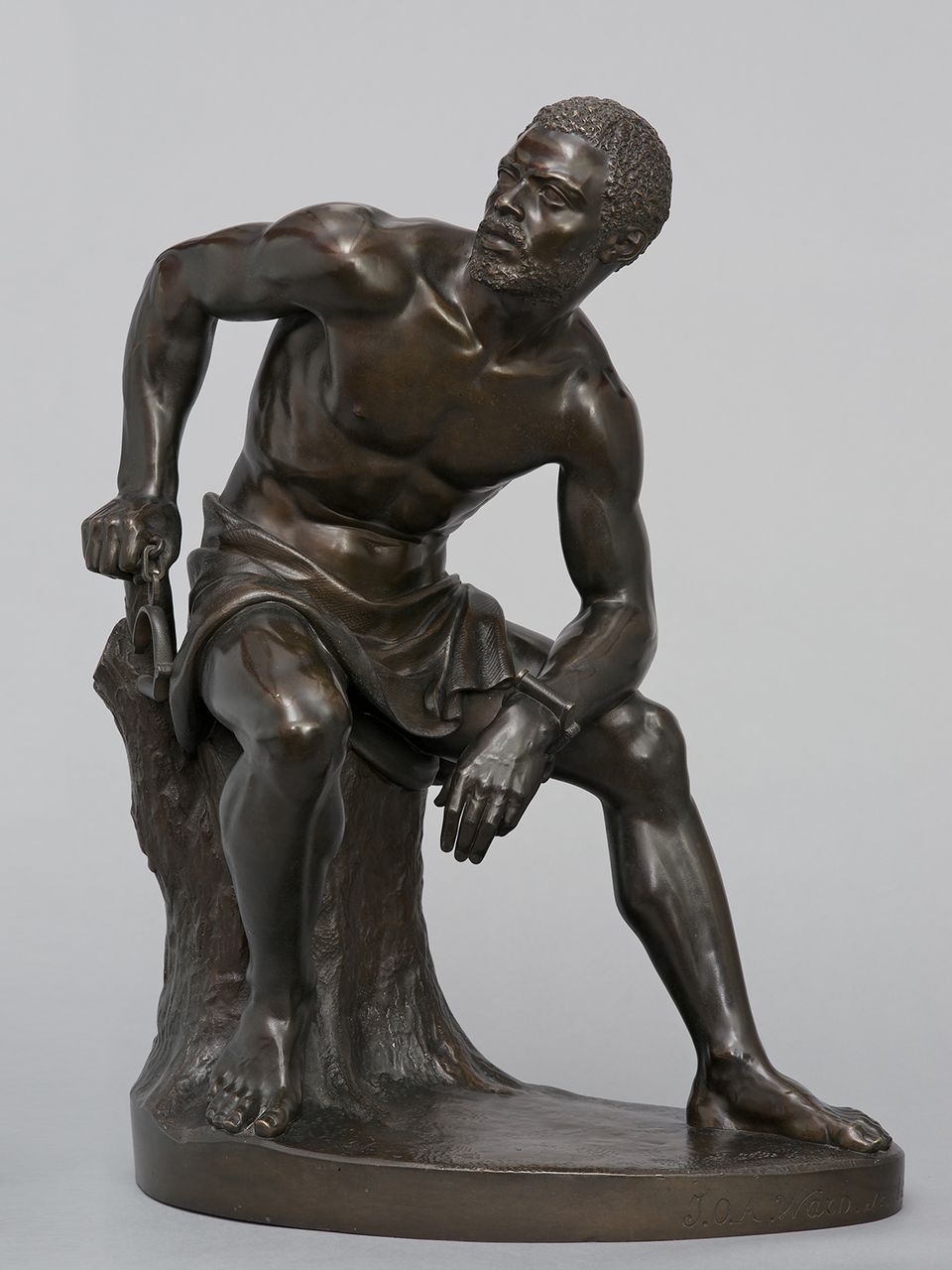
John Quincy Adams Ward, The Freedman, 1863, bronze, 19 1/2 x 14 11/16 x 9 5/8 in., Boston Athenæum, gift of Elizabeth Frothingham (Mrs. William L.) Parker, 1922, Photograph by Jerry L. Thompson for the Boston Athenæum.
About this Artwork
Ward’s sculpture of an enslaved man about to rise up, his shackles broken, is the most powerful abolitionist sculpture made during the Civil War. Jessie Benton Frémont commissioned a copy from the artist in 1864. She sent Ward a fragment of one of the guns from Fort Wagner, South Carolina, where Robert Gould Shaw and his black troops were massacred. The Frémonts admired Shaw, a white Bostonian who volunteered to command the all-black Massachusetts 54th Regiment, and mourned the loss of him and his soldiers. The fragment of the cannon, incorporated into the Frémonts’ cast, served as an emblem of the regiment’s sacrifice as well as a sober reminder of the war’s toll on the country.













